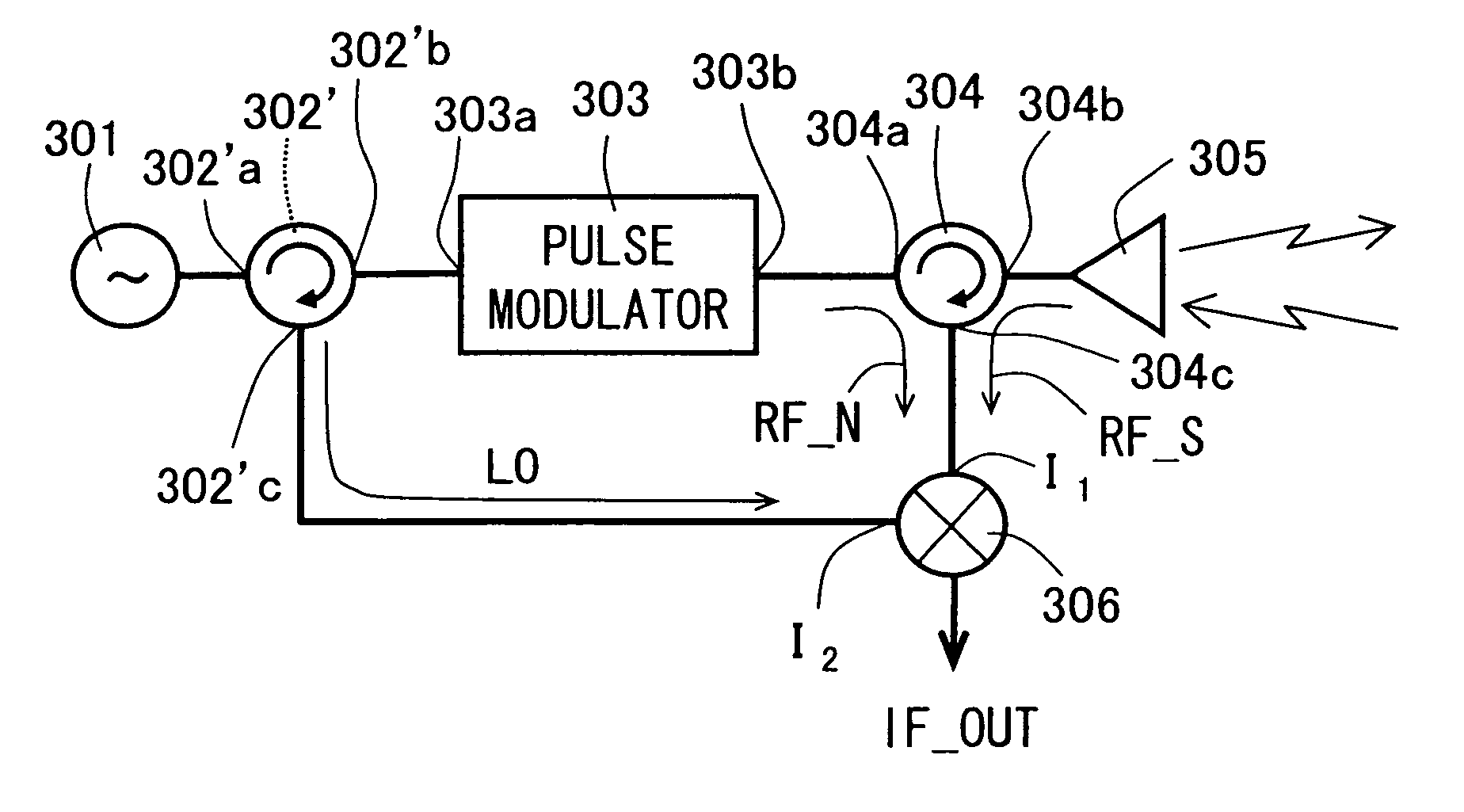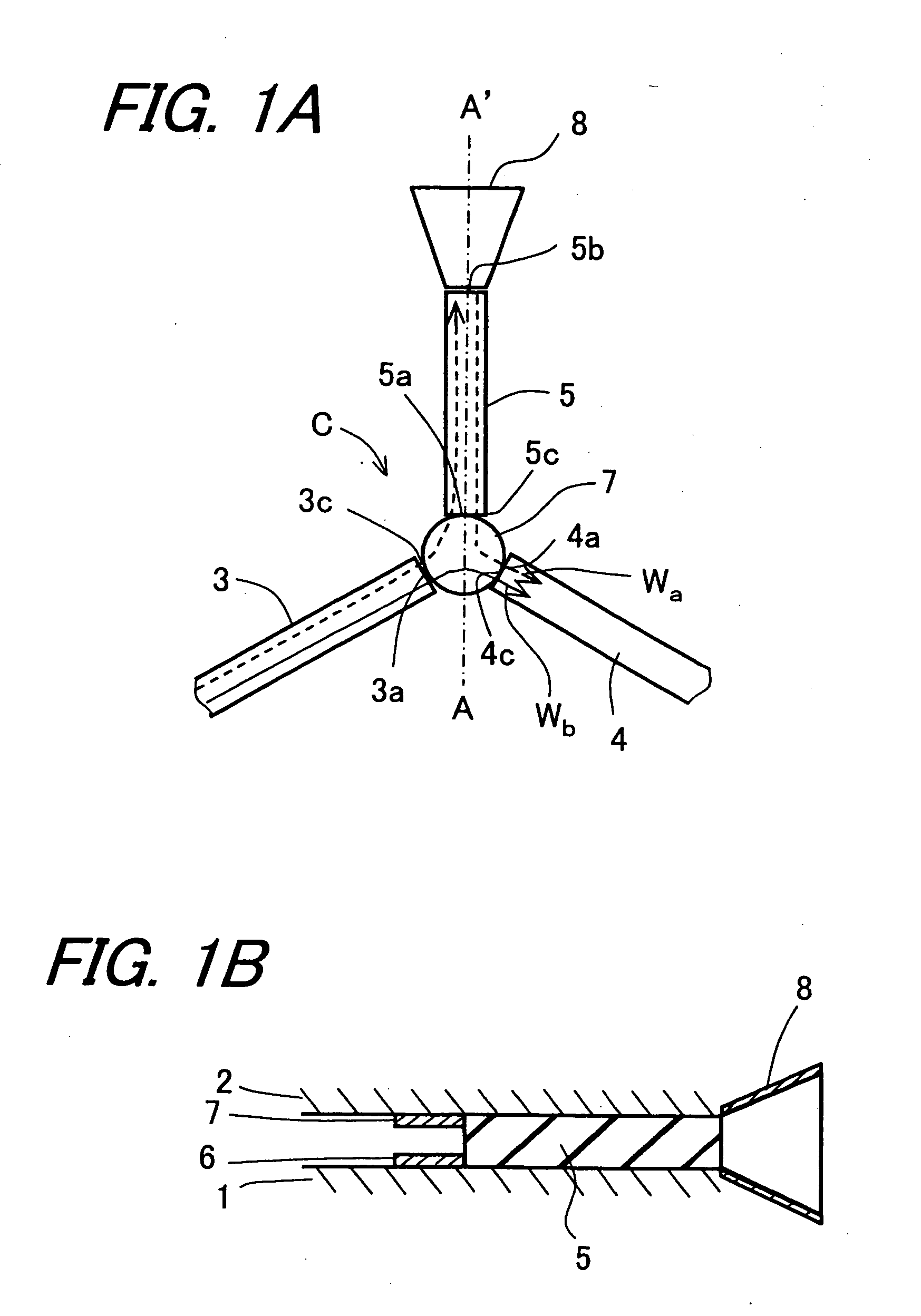Transmitting/receiving antenna, isolator, high-frequency oscillator, and high-frequency transmitter-receiver using the same
- Summary
- Abstract
- Description
- Claims
- Application Information
AI Technical Summary
Benefits of technology
Problems solved by technology
Method used
Image
Examples
examples
[0411] The mill-wave oscillator O shown in FIG. 13 was configured in the following manner. At first, two Al plates having a thickness of 6 mm were arranged as the parallel flat plate conductors 20 at a spacing of a=1.8 mm. Between these plates, there were so arranged the two ferrite plates 121a and 121b having a diameter of 2 mm and the later-described thickness of t mm that the ferrite plates were brought into close contact with the upper flat plate conductor and the lower flat plate conductor, respectively, and confronted each other while having their center axes lying on the common straight line. Around the ferrite plates 121a and 121b, moreover, there were radially arranged the inputting dielectric guide 122, the terminating dielectric guide 124 and the inputting / outputting dielectric guide 125, which were made of cordierite ceramics having a sectional shape of a rectangle of 1.8 mm (height)×0.8 mm (width) and a specific dielectric constant of 4.8, thereby to configure the first...
example
[0506] The high-frequency transmitter-receiver of the thirteenth embodiment of the invention, as shown in FIG. 21, was configured in the following manners. Two Al plates having a thickness of 6 mm were arranged as the parallel flat plate conductors 1 (2) at a spacing of 1.8 mm. Between the two Al plates, there were arranged the first to fifth dielectric guides 316 to 320, which were made of cordierite ceramics having a rectangular sectional shape of 1.8 mm (height)×0.8 mm (width) and a specific dielectric constant of 4.8. At this time, the circulator 304 was configured by arranging one of the two ferrite plates 315 having a diameter of 2 mm and a thickness of 0.23 mm in close contact with the upper side parallel flat plate conductor and the other in close contact with the lower side parallel flat plate conductor so that the ferrite plates confronted each other while having their center axes on the common straight line, and by arranging the second dielectric guide 317, the third diel...
PUM
 Login to View More
Login to View More Abstract
Description
Claims
Application Information
 Login to View More
Login to View More - R&D
- Intellectual Property
- Life Sciences
- Materials
- Tech Scout
- Unparalleled Data Quality
- Higher Quality Content
- 60% Fewer Hallucinations
Browse by: Latest US Patents, China's latest patents, Technical Efficacy Thesaurus, Application Domain, Technology Topic, Popular Technical Reports.
© 2025 PatSnap. All rights reserved.Legal|Privacy policy|Modern Slavery Act Transparency Statement|Sitemap|About US| Contact US: help@patsnap.com



